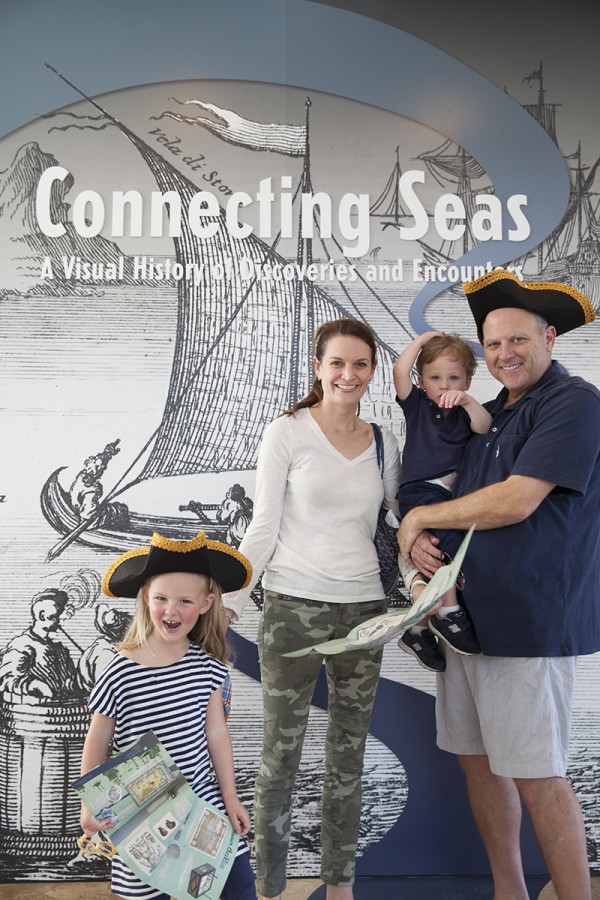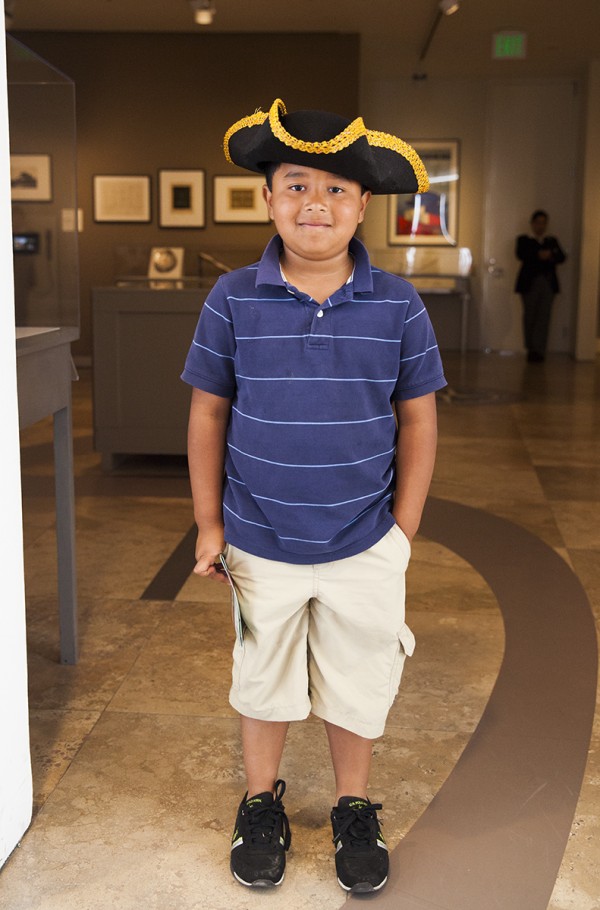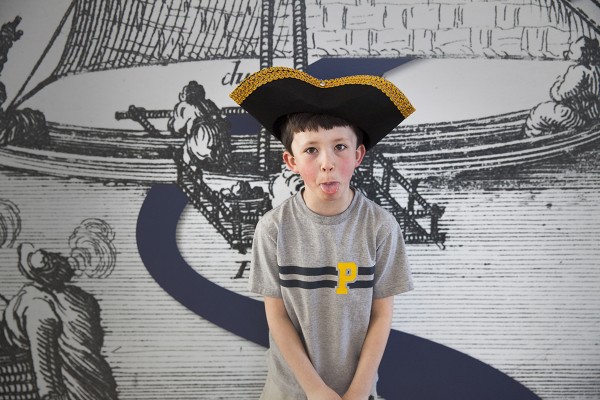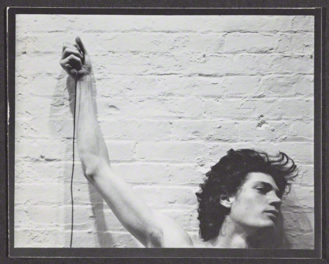Arrr! Free kids’ guide to the Getty Research Institute’s exhibition Connecting Seas offers a fun springboard for family storytelling
There’s been an unusual addition to the Getty staff. His name is William Dampier, and he’s an art-history pirate.
The creation of young-adult author Cornelia Funke, Dampier inhabits the exhibition Connecting Seas at the Getty Research Institute (GRI) and comes alive only when unfolded. Funke—who reads from her work at the Getty Center on April 6—conjured Dampier to be the host of the kids’ guide to this exhibition, which is designed as a fold-out pirate map. It guides you from treasure to treasure through the exhibition, which chronicles six centuries of the human quest to understand other peoples beyond the waves.

Logan and her family as fiercely friendly pirates
I dropped by the Connecting Seas gallery this past Saturday to talk with kids about what they and their families discovered in the exhibition using the kids’ guide. Though the guide is primarily designed for kids 8 and up, it wasn’t hard to find kids (and parents) of all ages warming to the pirate theme—and making up their own minds about what an art museum has to offer.

Quick-thinking Fabio
Fabio, age 6, was drawn to the coin in the first gallery—one of which was found in the wreckage of a Spanish treasure vessel off Florida. “I wish I could take one of them home with me,” he said. “I’d trade it for a big boat and sail to a lost island to find some treasure.” (According to Dampier in the kids’ guide, ghosts haunt the Florida wreckage where this coin was found. Whether or not the coins are also haunted, Fabio would have to discover on his own.)
One of the messages of the exhibition is that depictions of other cultures need to be approached with a healthy dose of critical thinking. So I asked Fabio, “If you see a picture of a place you’ve never been before, how can you know if it’s really true?” He thought for a moment. “I wouldn’t trust a picture,” he matter-of-factly asserted. “It could be a fake.”

Swashbuckling Thea
Thea liked the coin too and was busy thinking of other booty she could trade it for. If she claim one object for her own? “I’d take home the gold coin. It’s so cool and I could use it to trade for lots of things. I’d go to Hawaii and go snorkeling.”
Holden, meanwhile, was drawn to the large maps that greet you in the first gallery, presenting the world as it was known in the 1600s. He suspected there was more to these objects than the curators were letting on. “I think it’s actually a treasure map!” he announced of the largest specimen.
For eager adventurers like Holden, Dampier offers some advice in the kids’ guide: “I owned many maps in my life. The good ones led me to treasures and harbors, but I lost my ship and my crew several times because of the bad ones.” It’s true—pictures and maps can both draw you astray.

Arrr, Holden!

Jester Gabriel
Gabriel (aka “standup comic pirate”) made an interesting find in the case in the exhibition’s final gallery—a black pearl shell engraved with views of New Caledonia in the late 1800s. “The big shell with the drawing is so cool,” he said. “I’d take it outside to set traps and catch stuff.
My youngest interview subject was four-and-a-half-year-old Logan (pictured with her family at the top of the post). Still a little too young to be a budding art historian, she nonetheless liked all the water in the exhibition, explaining that it reminded her “of swimming in the summertime.” As for where she’d travel if she could sail anywhere, like explorers of old? “Seaworld and Disneyland! They are very far!” She’ll definitely be needing a good map.
The kids’ guide to Connecting Seas [PDF] is available for download online, or pick up a print copy at the entrance to the Getty Research Institute’s exhibition. It’s a fun way to find kid-friendly objects in the galleries and to spark family storytelling about what you see on display. Plus, to meet Cornelia Funke and hear her read her new GRI-inspired pirate story, mark your calendars for April 6. Reservations are free.




Comments on this post are now closed.